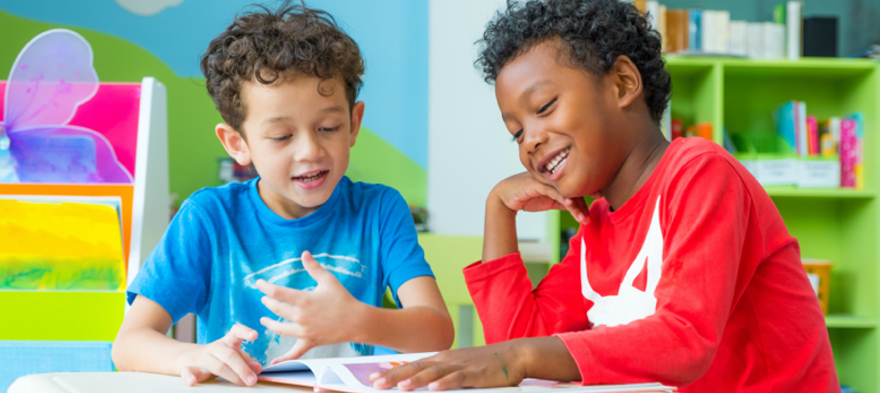
Feb 14, 2020 12:00:00 AM
by Alex Temeña
Every gathering is an opportunity for transformation. But when gatherings are intentionally designed to deepen belonging, powerful growth is possible.
To create a classroom experience that is not just about passing knowledge, but about transforming students in significant ways, [pullquote]we must see ourselves as more than curriculum designers or even facilitators—we must see ourselves as experience designers.[/pullquote]
My story as an experience designer starts with growing up in a family that placed a high value on the art of gathering and celebration—dinner parties, family reunions or birthday celebrations. As I grew older, I found that my most significant growth came from experiences of participating in or designing meaningful gatherings that centered a deep sense of belonging: A student diversity conference, working as a counselor at a mindfulness and design thinking summer school, retreats with my college dance company, hosting a purpose retreat for women of color. I left each of these experiences feeling like I had just been sprinkled with magic dust.
I’ve since sought to bring that feeling to all gatherings I design and host, whether they are workshops, retreats, parties or dance classes. My love for experience design led me to join Project Wayfinder as the Director of Education Design where I design the experience of our purpose learning curricula and curate content for teachers and students.
My goal is to bring out a quality of transformation in every experience of the curriculum. I always have four goals in mind:
When I design classroom experiences and educator training, the following five principles guide my process.
We know that deepening a sense of belonging is one of the best levers for increasing students’ perseverance and improving their academic behaviors. Intrinsic motivation increases when students feel cared for and connected to others. Setting a container means creating an environment where students feel supported and valued. There are a number of ways to do this:
Whether your lesson or advisory session is 20 minutes or 2 hours, setting the container is crucial.
When designing lessons, it may be easier to find ways to bring in visual and auditory learning modalities, but the kinesthetic is often overlooked. Involving the body not only keeps students more alert and engaged, but also supports students’ memory and learning.
For students to achieve deeper learning, they must understand the value of lesson content and be able to connect it to their own lives, their future educational pursuits/careers, or their current interests. Furthermore, we know that students are much more engaged when they know why they are learning something.
An engaging lesson offers many different modalities for reflecting, sharing, and participating. This not only gives students many different approaches to understanding a topic, but also allows students opportunities to connect to each other in ways that are more comfortable (perhaps a pair share instead of a whole-class discussion) or more in their stretch zone (perhaps a whole group share out).
Depending on their background, students will have different levels of comfort and familiarity with modes of sharing. Offering a variety of approaches to processing information can improve engagement and allow you to learn which approaches help your students best connect with each other.
Creating a transformational experience in the classroom starts with having meaningful and authentic relationships with your students. This means that you can connect to your students in a human way. Students report deeper learning experiences and greater understanding when they perceive their teachers as authentic.
A transformative classroom experience comes alive through prioritizing student experience: Do they feel like they belong? Are they able to move their bodies? Can they connect to the ‘why’ of the lesson? Do they have ample opportunities to share and process? Do they feel connected to you, the teacher? [pullquote]When we intentionally design the experience of a lesson, and not just content, we amplify the impact of our teaching and create a classroom atmosphere built on a foundation of safety and belonging where transformation can happen.[/pullquote]
Alexx Temeña is the director of education design at Project Wayfinder. Alexx graduated from Brown University with degrees in cognitive neuroscience and contemplative psychology. Blending curriculum design, performing arts, neuroscience, and mindfulness, Alexx’s work explores the question of how young people can create meaningful and fulfilled lives both individually and in community with others. For the past seven years, Alexx has taught and designed leadership curriculum for students at United World College: International School of Asia, Karuizawa. She has worked with more than a dozen schools in various capacities, from speaker and retreat facilitator to admissions representative and dormitory parent at a boarding school. She has also facilitated workshops for students in UC Berkeley’s Pre-College Internship TRiO program, teachers and school professionals at the Brain Conference hosted by New York State Independent School Association, and medical students and professionals in Japan through Team Medics. Outside of her work in schools, Alexx hosts daylong experiences for her community, particularly for women and young people to color to explore themes of identity, connect to their sense of purpose, and cultivate practices of wellbeing.
Few issues in education spark more tension and debate than standardized testing. Are they a tool for equity or a burden on students? A necessary check on school systems or a flawed measure of...
Charter schools are public schools with a purpose. Operating independently from traditional school districts, they're tuition-free, open to all students, and publicly funded—but with more flexibility...
Despite the benefits of a diverse teaching force, prospective teachers of color fall out of our leaky preparation pipeline at every stage: preparation, hiring, induction, and retention. Here’s what...
Ed Post is the flagship website platform of brightbeam, a 501(c3) network of education activists and influencers demanding a better education and a brighter future for every child.
© 2020-2025 brightbeam. All rights reserved.
Leave a Comment